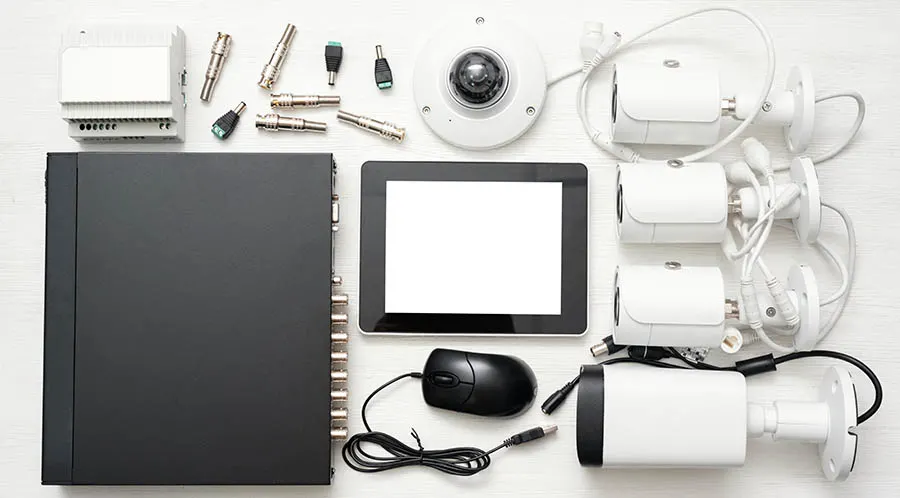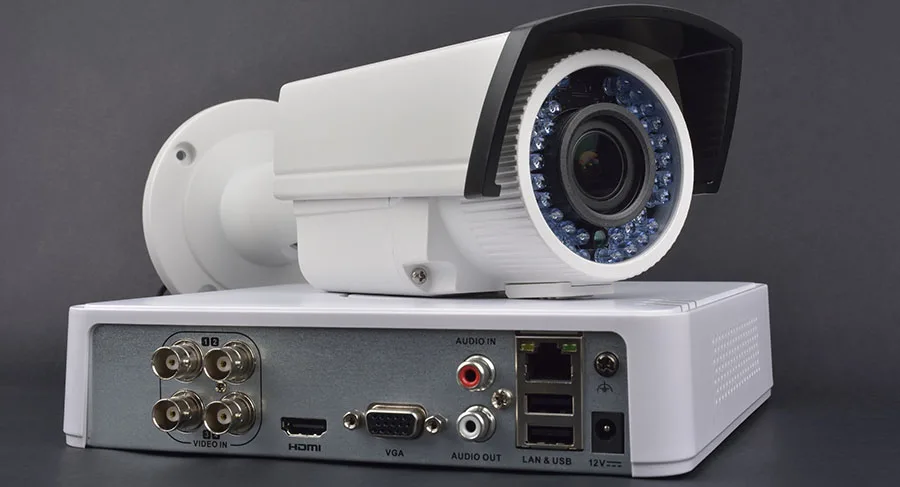We’ve come a long way since the grainy low-resolution video of the 80s and 90s, so why does it seem like footage from security cameras is always so low quality? While it might seem like this technology is stuck in the past, you might be surprised to find most modern security cameras provide up to 4K video quality in consumer devices.
Security camera footage is typically low quality because manufacturers make a compromise between image resolution and storage space. Higher resolutions require space to store all of the data, driving up costs, but there are ways to balance this.
Grainy camera footage may still seem like a common problem, but there are other factors involved that can make your footage lower quality. It’s true that some cameras sport a lower resolution, but the standard for security cameras has come a long way in just a few short decades. These days, you’d be hard-pressed to find a new camera that has a resolution lower than 720p, so there should always be a way to get video that looks great.
Practical Limitations of Storing Video

One of the main limitations of your security camera’s video quality is storage. When you record videos through your security system, it is stored onsite on the hardware you have setup. This is usually taken care of by your NVR, network video recorder, or DVR, digital video recorder. These devices track and store your video for later viewing.
A security camera like the Sequro 720p (on Amazon) is doing a lot more than the camera on your smartphone. Your system will also keep track of the time and date on every frame of video. These are called timestamps, and they also take up space on your device. When it comes to how this video is stored, there are usually two different options.
- Video footage is stored on local hardware, which means the data will be collected and stored in a hard drive storage space on-site.
- Video footage is stored in the cloud, which means that the data has been collected and stored on a hardware located somewhere else, probably owned by a large tech company and available to use via a subscription model.
Most systems will opt for a hardware solution, but the cloud may be a better option if there is a lot of data to manage and maintain. The downside to storage on the cloud is that it opens you up to security risks, hacks, and it also limits the ability to access information without a network connection. Put simply, you won’t be able to check it unless you have an internet connection.
Some manufacturers offer free cloud storage, but professional services are recommended if dealing with a massive load of sensitive data. What becomes costly and limits video quality is the amount of space that a minute of video takes up. From the chart seen below, it’s not hard to understand why most security cameras opt for a lower-resolution camera. A lower resolution camera makes storing data a lot more efficient.
| Video Resolution | Size of 1-minute video | 1GB can store |
| 4K HD Ultra | 84MB | 12 min |
| 1080p | 20MB | 50 min |
| 720p | 5MB | 3.5 Hours |
When you start working with even higher resolutions like 4K, you start to see some serious storage concerns. To record a week’s worth of 24-hour videos with a 4K camera, you would need about 1TB of storage, and that’s only if you are using one camera. Imagine that if you had a whole office worth of 4k cameras, storage concerns would start becoming a costly problem.
There is the fact that storage space is indeed getting cheaper by the month; just a decade ago, it would have been too expensive to base a system off terabyte drives. Today it is almost standard and often very affordable. But, with cameras gaining better resolution, they catch up with the cheaper storage quickly. This is why even today, storage is a limitation on video quality for security cameras.
Other Complications
How Cropping and Zooming Lowers Image Resolution
Storage limitations are one of the biggest reasons you run into lower quality video footage in security cameras. But there are some other reasons why you might run into a grainy, low-resolution video. One thing to consider is when you crop an image, you lower the quality of the picture. In the same way you crop an image for Instagram, security camera footage is often cropped and widened.
This means that no matter how high the quality of an image you have, you lower the quality once you crop it and zoom in. Even though security cameras have better optical zoom than your cellphone’s camera, they still lose some quality when zooming in. Unfortunately, this is one of the main ways that you use a camera to catch a criminal, so you see this happen often.
When you monitor a large space, you will almost always need to zoom in if trying to capture small details. Another thing to consider is that your security camera is doing more work than the camera on your phone. A security camera:
- Uses infrared lights to help capture video in low light situations.
- Has better optical zoom to better capture close up images.
- Has enhanced processing power that not only adds timestamps but also can compress and convert the video feed.
When it comes to all the functions a security camera offers, the cost can become an issue, one reason why many choose to save cost by splicing cables (our guide). This, combined with the storage limitations, means that manufacturers are always balancing these essential features with a resolution to make a product that is not only cost-effective but also of high quality.
Security cameras are also built to last. So while you might see the camera on your phone get upgraded every few years (like we’ve discussed in the past in our guide on phone reboots), some security systems can last upwards of 20 years. Put simply, there are security systems built in the 1990s that are still functional today, despite the fact the video footage isn’t as high quality as what’s available now.
How to Fix Blurry Security Camera Footage

If you’re trying to troubleshoot a blurry or grainy video feed, there are a few quick and easy ways you can solve the problem. Read through these tactics to see if any sound like a good option for you.
Buy A 5MP or 8MP Camera
If you are still being plagued with low image quality, there are some things you could consider that could help. The easiest solution would be to use a camera with a higher resolution. You could always opt for a 5MP or 8MP camera like the Armcrest UltraHD (on Amazon), but this will undoubtedly cost more. You could also be more strategic with your camera placement, so that less zooming is necessary.
Have More Than One Camera
One of the main reasons a camera loses image quality is due to zoom, so making sure you aren’t overusing the feature can limit this reduction. If you have a large space to cover, you could always opt for using multiple cameras instead of one. This can be more expensive but will result in a higher quality video from different angles. But, as discussed above, this will also increase the storage space required.
Make Sure to Test Your Camera
It’s also always good to test out your equipment to set reasonable expectations. You certainly don’t want to be surprised that your video quality is unusable when you need it the most. A good practice is to test your equipment in the field. Test whether your cameras will perform the way you want them to.
This means trying to see faces or license plates. Try and make sure you can make out small details with the zoom without too much quality loss. Understanding your security camera’s limitations will help you avoid problems with lower quality video. Not only is storage space a concern when using cameras to monitor an area 24/7, but also quality loss happens when you zoom or crop an image.
Security cameras also do much more than just capture video; they’re designed to work in low light situations, process and timestamp the image before sending off to be stored, and they often have a higher quality optical zoom than other digital cameras. All this said, security camera technology is progressing fast, and new cameras produced today will sport high-quality resolution like 1080p and 4k, and they will get smarter about only saving the video you want, not everything. But we’re not there yet.
